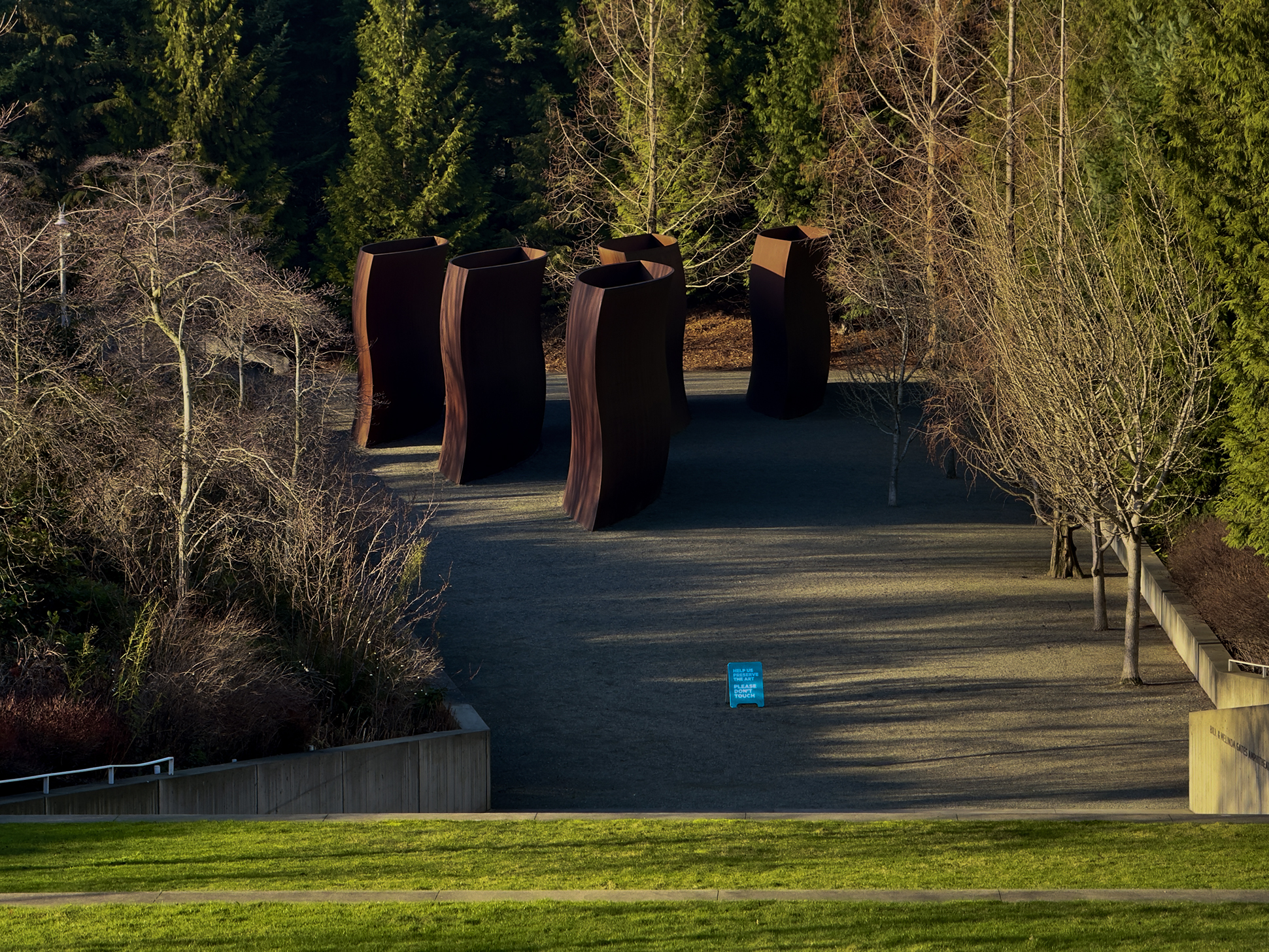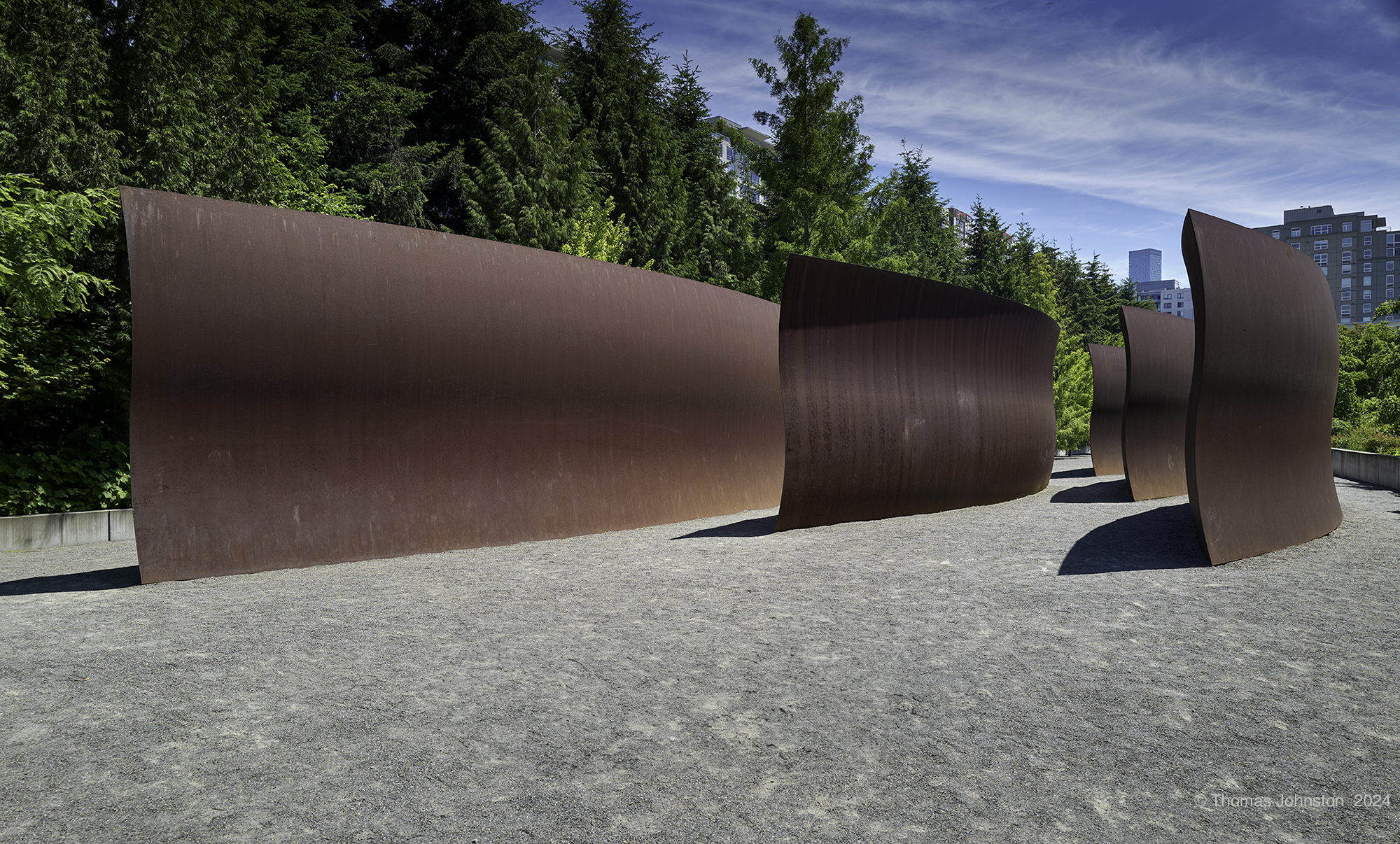
Richard Serra, Olympic Sculpture Park, Seattle Art Museum
The Olympic Sculpture Park on the 9th day of January 2025, in the brilliant, late afternoon Winter light.

Richard Serra, Olympic Sculpture Park, Seattle Art Museum
The Olympic Sculpture Park on the 9th day of January 2025, in the brilliant, late afternoon Winter light.
Seen from afar, as in this June 2024 photo, looking down into the Valley, one sees Wake, the 5 element sculpture Richard Serra created between 2002-2004. As one approaches, walking down a gravel path to the west, or by the stairway, one’s spatial relationship to the sculpture changes, subtle and slow. Even though one knows the general scale of Richard Serra’s monumental sculpture, you sense it growing larger the closer you get to it. I am always amazed and astounded on just how this one sneaks up on you the closer you get to the five elements that comprise Wake; your perceptions are altered. All of the sudden you find yourself within the space, sharing or occupying the same space, only now, once you are there, you are overpowered with the pure sense of something you don’t know, a new experience.
These soft sensuous forms tower over as you move among their bulging, undulating rhythmic surfaces, of corten steel, absorbing the light in the warm glow of the self protecting rusted surfaces. I have been fortunate to visit the sculpture park many times over the years, observing the garden as it matures, seeing it in different seasons, different times of day, different kinds of light, one can look forward to seeing something new with each visit.
Regular visits to the Seattle Art Museum’s Olympic Sculpture Park reveal something new with each visit during different seasons, time of day, weather, light. Late in the afternoon on this autumn day, the light was low in the sky, the Valley where Richard Serra located his sculpture was falling into shadow. The play of light and dark on these sensuous forms invite you in to revel in the mystery of this creation.

Olympic Sculpture Park, Seattle
I was fortunate to have met Richard Serra on several occasions. The first time, Judy Chicago called Sidney Felsen and arranged for me and Suzanne Lacy to visit Gemini Studio late one night. Mark Stock was assisting Richard at the press. Suzanne and I honored the creative process, knowing well not to interrupt; but observing the artist at work was a singular and rewarding experience. Continue reading →
I’d been wanting to visit the sculpture park again for some time, to see new additions to the collection and to revisit works by three of my favorite artists, Serra, Calder, and DiSuvero. I went on a brisk, overcast day just before the new year.
I was reflecting on the first time I saw Richard Serra’s Wake, 2004, just after it was installed. It is first seen from a long distance, from above, and as you approach the work it grows and grows; by the time you reach it, you are immersed within it.
Seattle is fortunate to have a classic Alexander Calder, from 1971, Eagle. It is a sculpture worthy of repeated visits, to see how it captures northwest light in the different seasons and times of day.
It was exciting to see Mark di Suvero’s, Schubert Sonata, 1992, with Eliot Bay as a backdrop. As with all of DiSuvero’s signature work, it is like a drawing in steel, and I look forward to spending more time with it during upcoming visits.